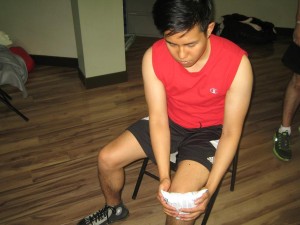A cut or wound can cause bleeding and for those who are not queasy, a drip of blood is not a big deal. On the other hand, a wide wound that does not seem to stop bleeding is definitely an unpleasant sight for many. There are also some cuts that appear intense at first but only need a bandage while others look minor but would require stitches. Always remember that after any injury, it is important to stop and take a deep breath before assessing the scenario. By enrolling in a first aid class, you are prepared to deal with both minor and major wounds during emergencies.

What are the injuries that need stitches?
In most cases, you can easily determine if a cut or wound requires stitches. If there is a cut on the face, it does not necessarily need stitches, but it will surely help out a lot if it is done by a doctor in order to minimize the chances of scarring. As for deep wounds or cuts on the neck, it must be stitched. It is advised that cuts longer than ½ inch requires stitches as well as deep wounds over joints such as the elbow or knee since bandages could not keep them closed to promote healing.
When are stitches needed?
In case you are dealing with a cut that is long or deep enough to bleed, your initial move is to control the bleeding. You can do this by pressing a gauze or cloth over the wound. It is important to maintain constant pressure on the wound while positioning the affected area higher than the heart. If the cut is on the leg, instruct the individual to lie down and elevate the leg on a stool or pillow. Always check the wound after 10 minutes of applying constant pressure. In case the bleeding has stopped, you only need to apply a bandage.
How to care for a cut or wound
A cut or wound that does not require stitches must be cleaned. Once the bleeding has stopped, wash the wound using water and soap. You have to apply a topical antibiotic and cover with a bandage. Always keep the wound dry and elevated if possible. For shallow wounds, you should still consult the doctor if there is any debris present such as sand, glass or gravel since these can cause infection later on if not properly removed.
http://youtu.be/e1jThI5wbVw
If the cut was caused by an animal bite or rusted metal, consult a doctor right away. A tetanus shot will be given within 48 hours after the wound was sustained to minimize the risk of infection.
Important considerations to bear in mind
Take note that even a minor cut would require stitches if any of the interior structures are seen. If you see anything yellow within the wound, it could be a layer of fat. Anything white could be bone or a tendon while dark red colored flesh can be muscle. Understandably, if you see anything deeper than the upper layers of the skin, it would require stitches.
